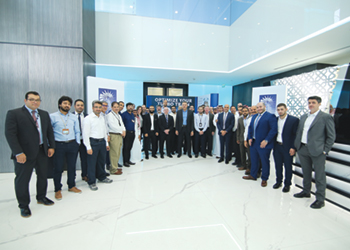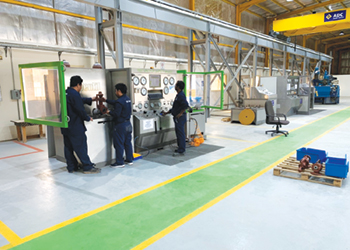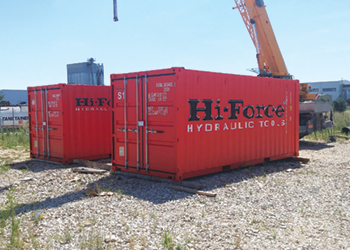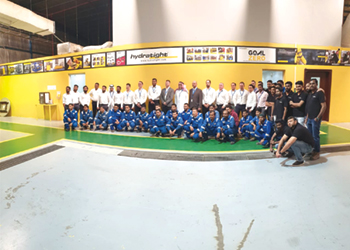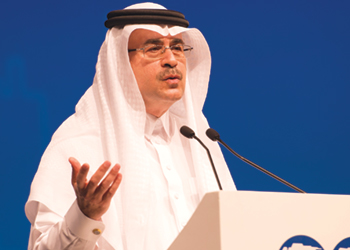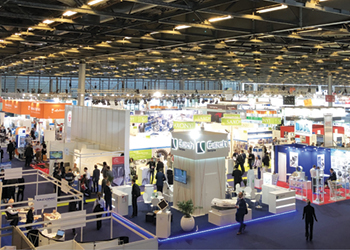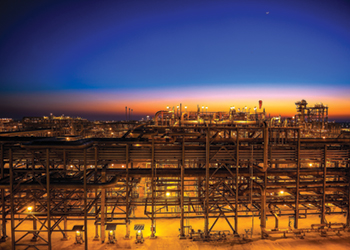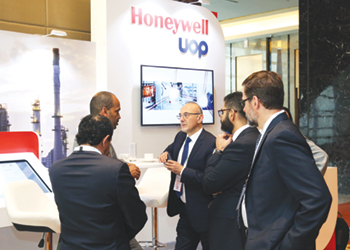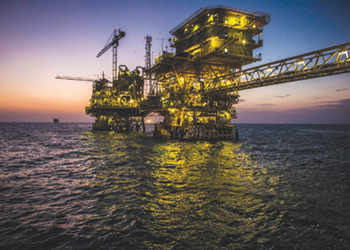
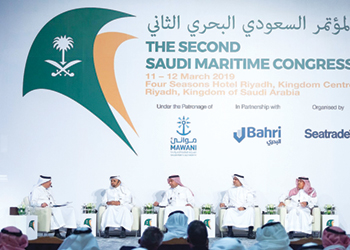 The SMC in session
The SMC in session
Vision 2030 goals to drive sustainable growth and developments in the maritime sector were discussed during two days of interactive sessions at SMC
Saudi Arabia’s maritime sector is gearing up to make the kingdom a regional logistics hub and drive forward economic diversification and job opportunities, participants at the Saudi Maritime Congress (SMC) in Riyadh heard on the opening day at the Kingdom Centre in Riyadh.
"This event takes place at a time of significant change within the kingdom’s logistic and maritime infrastructure. The Saudi Maritime Congress highlights major projects and strategic opportunities that will solidify the kingdom’s position as a global maritime and logistics hub, and will undoubtedly further our aim of attracting strategic investments and viable ventures into [Saudi Arabia] by highlighting our objectives over the short, medium and long terms," Saad Bin Abdulaziz Alkhalb, President, Saudi Ports Authority (Mawani), said.
Saudi Arabia is the key player in the Red Sea, which has recently seen a scramble to develop maritime assets as the importance of its strategic location on the section of the world’s shipping trunk route between Colombo and Suez increases in significance to global shipping lines.
"Saudi Arabia’s maritime sector is set to receive a much-needed boost, with the generous allocation of $8.8 billion to the energy, mining and logistics sectors in [the government’s] recently announced budget for 2019," said HRH Princess Sarah Al Saud, Director of Maritime Business Development, Arab Academy for Science, Technology and Maritime Transport. "In fact, the country is on an aggressive diversification path, with substantial government spending expected to [catalyse] Vision 2030 goals and drive sustainable growth and development."
Port development is moving ahead, with projects at Dammam and King Abdullah Economic City launched in the last five years to boost the kingdom’s import, export and transhipment potential.
One of the largest projects recently undertaken in the sector is the King Salman International Complex for Maritime Industries and Services, a joint venture of Saudi Aramco, Bahri (National Shipping Company of Saudi Arabia), Hyundai Heavy Industries, and Lamprell. A report published in 2018 by leading Saudi investment bank, Jadwa Investments, said completion of the complex was expected 2022.
According to Saudi Aramco, the entire project is designed to contribute around SR64 billion ($17 billion) to the kingdom’s GDP, boost import substitution for maritime products and services by around SR45 billion, and create more than 80,000 direct and indirect jobs by 2030. The integrated maritime yard is expected to be the largest in the region, in terms of both production capacity and scale.
Conference organiser Seatrade has become a key catalyst for maritime development in the GCC region, structuring events of particular significance in the UAE as well as Saudi Arabia, and boosting the viability of the container, tanker, bulk and offshore segments.
"At the first Saudi Maritime Congress, which was held in Dammam in 2014, and some of you here I believe attended that event, the message was pretty clear. Saudi Arabia was committed to the development of the maritime and logistics sector, and indeed the maritime industry across the board," Chris Hayman, Chairman, Seatrade, told the Congress’ opening session.
"Four years on, that forecast has been overwhelmingly fulfilled in the Saudi Vision 2030 programme. The world is watching in admiration the unfolding of a strategy that will position the kingdom of Saudi Arabia as a global hub, delivering connectivity between Asia, Europe, and Africa, increasingly."
Eng. Abdullah Aldubaikhi, CEO, Bahri, dwelt on recent adverse trade and regulatory developments that have made the life of shipowners more difficult.
"The trade war between China and the US has a negative effect [on the shipping business], in addition to the different regulations imposed recently by the International Maritime Organisation (IMO), regarding sulphur emissions. The call to reduce sulphur content in bunker fuel from 3.5 percent to 0.5 percent by 2020 has made shipowners confused. The question now facing the industry is: will sufficient fuel be available to the industry, and how much will it cost?"













































































